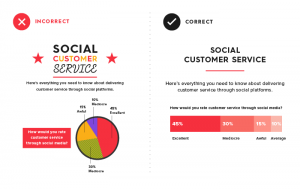Even if you’ve never done CrossFit, you’ve likely heard stories about the tight-knit culture, addictive workout atmosphere and even the unique language and acronyms they use for various workout terms, all of which make it feel like an exclusive club.
While CrossFit itself may not be for everyone, the techniques they use to motivate members and create an engaged, interactive community are relevant for all companies. Here are a few tips for employee engagement taken from the pages of the CrossFit manual:
Establish an Rx
Every “WOD” (workout of the day) includes an Rx – a prescribed weight or form associated with the exercises. These weights can be quite challenging for most participants, but if you’re able to accomplish the WOD at the Rx level, you feel fantastic and know that next time you can work on better form or timing. If you can’t, you have a good understanding of what you need to work towards and can concentrate on making incremental improvements. The same goes for workplace goals. Benchmarks and objectives are essential to driving better performance and encouraging employees to reach and even surpass expectations.
Put Results on the “White Board”
This is like the workout version of the Leaderboard. When a WOD is done, the instructor asks everyone to write their results next to their names on the white board. If you had a good day, you can feel proud to put your numbers up, and others in the class will likely even compliment you on your performance. If you didn’t reach your goals, however, this system creates motivation to work harder the next time. Likewise in the office, publicly recognizing the achievements of others ensures that employees will be engaged and motivated to keep up the good work. And while you won’t want to make anyone feel insecure about having a slump, a little friendly competition never hurt!
Create a Team Environment
One of the biggest reasons people become so attracted to CrossFit, committed to going every day and striving for new accomplishments, is the sense of team and comradery it offers. Classmates encourage each other to push harder and get through the workouts, and often the last person to finish the WOD is the one with the biggest cheering squad. And if you’re doing a partner workout, you’d rather collapse than let your teammate down. Fostering that feeling of belonging, team commitment and idea that “we’re in this together” can help any workplace boost their employee engagement and motivate team members to do their best for their team and for the company.
Give Tips and Encouragement
CrossFit instructors often walk around during classes to give advice on better form as well as words of encouragement. The best instructors also know how to motivate you to pick up that weight one last time even when you want to give up. A good manager has the same skills. He or she should be accessible and visible, regularly offering guidance, praise, and even a motivational speech when needed.
Record Employee Progress
At CrossFit, members are encouraged to record their daily results so they can benchmark them for the next WOD, identify areas to work on and monitor their progress over time. Similarly, managers should be helping employees to track their strengths, weaknesses and progress at work. During an employee’s annual review, managers should be able to point to how the employee tracked against actual metrics – even if they are qualitative results. If they can’t, it’s possible that the employee’s job objectives were not clearly defined, and/or were not being measured properly. It’s important to remember that if you haven’t established that Rx mentioned above, this step will not be as meaningful—how will the employee know if they “won the workout”, or met their goals? Not having benchmarks in place to work toward, or a structured way to track progress, can lead to a feeling of apathy and disengagement in employees.
Culture and engagement is not just about the parties and perks. Creating a positive team environment and processes for setting goals and tracking progress toward them are essential to effectively engaging your workforce.
Business & Finance Articles on Business 2 Community(29)
Report Post




